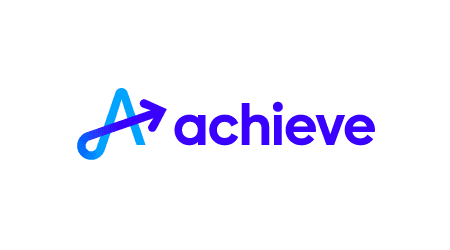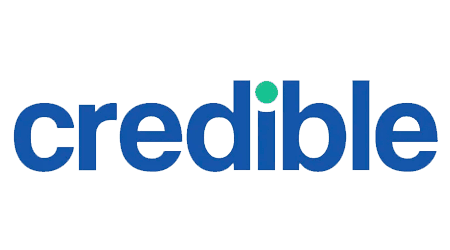Flight school can be costly, especially if your pilot training program doesn’t qualify for federal aid. And the cost of flight training school depends on your aspirations — a commercial pilot’s license can cost well up to $100,000.
But don’t let the sticker price of flight school deter you. If your dream is to become a pilot, you have options to pay for flight school beyond traditional student loans.
4 ways to pay for flight school
There are quite a few paths to take to pay for flight school tuition and pilot training certifications. Additionally, you can combine a number of these methods.
1. Scholarships and grants
If you’re looking for a way to cut the cost of flight school, look to these first. There are plenty of scholarship opportunities available through aviation organizations — and scholarships don’t need to be repaid. The requirements for scholarships vary based on the type: government, military, athletics, identity-based and so on.
School grants don’t need to be repaid either, and can come from federal, state and even university sources. However, you must complete the Free Application for Federal Student Aid (FAFSA) or Dream Act in order to be considered eligible for most grants.
Best for: People that only want to borrow what they need.
Key features:
- Don’t have to be repaid
- Completion of FAFSA or Dream Act for grants
- High grade point average may be required
- Scholarships may require high test scores, identities or activities
2. Personal loans
Personal loans can be used for nearly anything, including paying for flight school tuition. The amount you can get for personal loans depends on the lender you work with, and many offer limits from as low as $1,000 all the way up to $50,000. However, there are some lending marketplaces and lenders, such as Credible, that offer up to $100,000.
Personal loans can be secured or unsecured. Unsecured personal loans (loans without collateral) may be a little harder to qualify for and may come with higher rates.
Best for: Those who need a large amount but can’t qualify for a federal or private student loan.
Key features:
- May need good credit, 670+
- Minimum income requirements
- Unsecured personal loans may have high rates
- Rates vary, anywhere from 2% to 36%
What is the Finder Score?
The Finder Score crunches 6+ types of personal loans across 50+ lenders. It takes into account the product's interest rate, fees and features, as well as the type of loan eg investor, variable, fixed rate - this gives you a simple score out of 10.
3. Student loans
There are two main types of student loans: private and federal.
Private student loans come from individual financial institutions, such as a bank or credit union. Federal student loans come in two flavors; subsidized, where the interest is paid by the education department while you’re in school, and unsubsidized loans when the interest starts accruing as soon as you get funds.
Often, flight schools are private so they lack degree programs, making them ineligible for private student loans. You can get federal student loans for flight school if you’re attending an accredited flight school (FAA-certified), like the National Aviation Academy or Beyond Aviation Flight School.
Best for: People attending an accredited flight school, or a college to earn an aviation-related degree.
Key features:
- No credit check with federal student loans
- Credit check required with private student loans
- Rates vary, often between 4% to 8%
- Attend either accredited flight school or college to be eligible
4 student loans you can use for flight school
| Loan amount | APR | Term | Eligibility requirements | ||
|---|---|---|---|---|---|
Federal Direct Subsidized Loans | $3,500 to $5,500 per year — depending on what year you are in school |
| Up to 25 years | ||
Federal Direct Unsubsidized Loans |
|
| Up to 25 years | Undergraduate, graduate or professional student; enrolled at least half time at a Title IV school; meet other federal student aid eligibility requirements | |
Federal Direct Grad PLUS Loans | Up to 100% of your school-certified cost of attendance |
| Up to 25 years | Graduate or professional student, enrolled at least half time at a Title IV school, no adverse credit history, meet other federal student aid eligibility requirements | |
Sallie Mae | Cost of attendance less financial aid | 4.50% to 15.49% APR | 60 to 180 months | You may be eligible if you are at least 18 years old and if you are US citizen or permanent resident |
In addition to these loan options, some lenders offer financing specifically for pilot training. AOPA Aviation Finance and We Florida Financial Credit Union both provide financing to help you earn your pilot’s license.
4. Pilot school financing and flight training programs
Some schools partner with private lenders to offer financing. This can help ease the burden of searching for loans you may not ultimately qualify for. Some airlines — like JetBlue, PSA Airlines and Delta — offer training programs that end with a job offer. The exact scope of the training and how much you pay varies, so compare programs to find the airline that best suits your needs.
ATP flight school is partnered with Sallie Mae to offer low-interest student loans to ATP training students. There are flexible repayment options, deferment programs, and no origination fees or prepayment penalties. Schools such as Blue Line Aviation have also partnered with FMS Bank’s Skybound Professional Pilot Loan Program.
To qualify for a training program some programs only require you to have a high school diploma, but a few may require a bachelor’s or associate degree in an aviation-related field.
Requirements for an airline training program can include:
- High school diploma or GED typically required
- At least 16+ years old
- Possibly have a bachelor’s or associate degree
- Earn a student pilot certificate
- Medical clearance
Best for: People looking for convenience who want to enroll in a training program with available aid.
Key features:
- Enroll and apply
- Convenient and less time searching
- May be low-interest loans
- May accept cosigners
- Requirements vary by program or airline
How much does flight school cost?
A private pilot certificate can cost anywhere from $4,000 to $20,000, depending on the flight school, the airplane used and how fast you complete the program.
A commercial pilot certificate can reach up to $100,000, according to the Pilot Institute. If you have no experience, expect to pay closer to $90,000.
How to apply for student loans for flight school
When you’re ready to apply for aid, make sure you have information about yourself and your finances on hand to make the application process a little easier. Then follow these steps:
- Check if your pilot training program is accredited. Contact your flight school to see if its program is accredited. If your school isn’t eligible, your loan options will be much more limited.
- Submit the FAFSA. Even if you’re not eligible for federal financial aid, you should still submit FAFSA. Some scholarship programs ask for it when determining your financial need.
- Research scholarships and grants. There are a slew of flight school and aviation scholarships offered by organizations across the US, such as Aircraft Owners and Pilots Association (AOPA), Experimental Aircraft Association’s (EAA), Women in Aviation International and more.
- Compare private loan options. While most private student loan providers require borrowers to attend an accredited school, there are a few that offer loans specifically for training programs, such as Wells Fargo and Sallie Mae.
- Look into personal loans. Once you’ve exhausted your free aid and student loan options, you may want to compare personal loans. Some have restrictions on how you can use the funds, so check with the lender first before applying.
Student loans with bad credit
Federal student loans don’t come with a credit check, but other student financing options typically do. If you have poor credit, you may want to consider a cosigner, also called a guarantor. Cosigners sign onto the loan with you and agree to repay the loan if you’re unable. Many students have a parent or guardian act as a guarantor. Explore personal loans with cosigners and co-borrowers.
What to watch out for when borrowing for flight school
Keep these three factors in mind when you’re comparing loans for flight school:
- High-interest rates. Private student loans and personal loans tend to have higher interest rates than federal student loans — especially if you don’t have the best credit. Understand the amount you’ll need to repay before you commit to a loan.
- Eligibility requirements. You’ll need to attend an accredited flight school to qualify for federal aid and most private student loans. And personal loan providers might not let you use the funds for postsecondary education.
- Immediate repayments. While federal student loans and most private options come with deferred repayments until after you finish school, this isn’t the case with personal loans — repayments usually begin within a month.
Bottom line
Ready to turn your dream of becoming a pilot into a reality? You might want to start by looking into scholarships offered by aviation organizations to reduce how much you need to borrow in terms of flight school loans.Then you can pick up the slack by taking out a loan.
If you don’t qualify for scholarships, grants, or student loans, compare personal loans to help fund your education or training in becoming a pilot.
Ask a question
More guides on Finder
-
$415 billion in student loan debt may not get paid
22% of borrowers say they won’t be able to afford student loan repayments when they resume.
-
Federal student loan interest rates by year
How the recession and changes to federal programs affected rates from 2006 to 2019.






